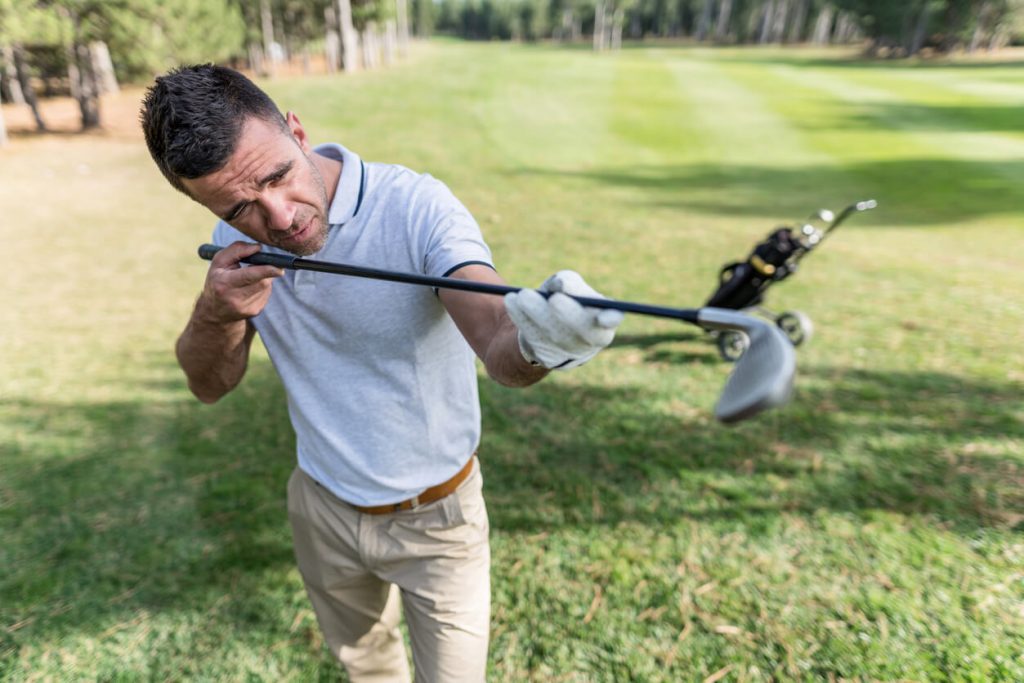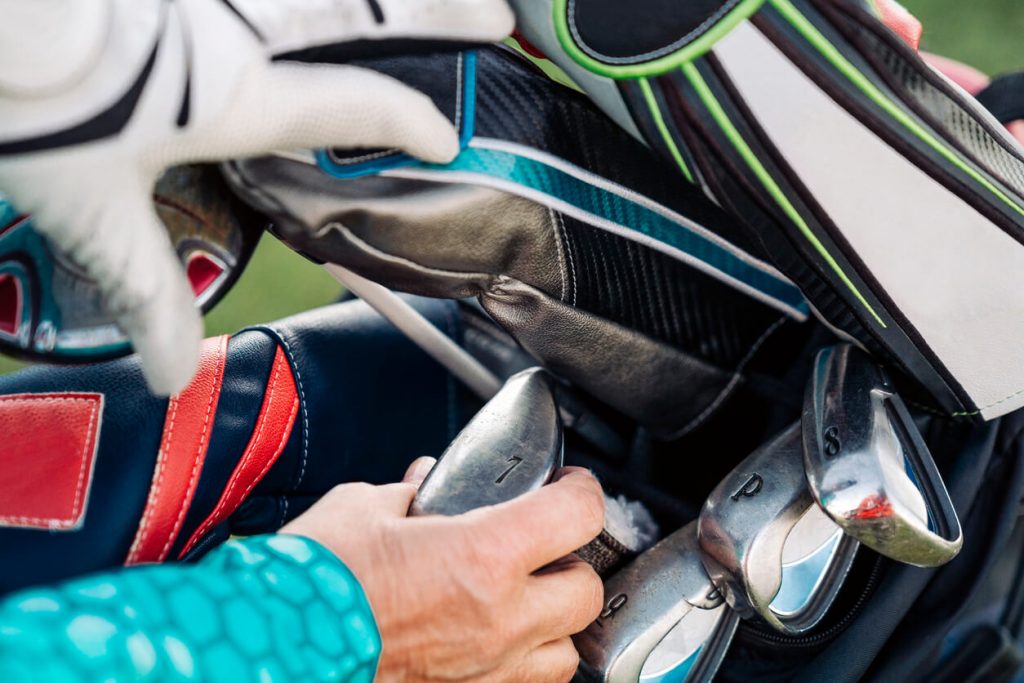A good golfing read is like nothing else. Regardless of your experience or level of interest in the game, some truly brilliant golf books are out there to scratch your itch.
In this article, we’ve put together something for everyone—from the more technical and mental elements of the game to the captivating storytellers and tours of great courses that whet your appetite no end.
Golf is blessed with some incredible writers and teachers to help us play better and enjoy it more, so what better way to spend a day off than settling down and getting lost in a good golf book?
10 golf books you need to read

1. Ben Hogan’s Five Lessons: The Modern Fundamentals of Golf
For many of us, if given the choice of watching one golfer from the past, it would be Ben Hogan. Elements of his swing are still talked about and mimicked today, and his ball-striking was sensationally good.
His most famous book, co-written with Herbert Warren Wind, focuses on breaking down the golf swing into its main fundamentals: grip, stance, posture, and the swing itself.
Interestingly, Hogan was not right-handed. In the book, he writes: “I was born left-handed—that was the normal way for me to do things. I started golf as a left-hander because the first club I ever came into possession of, an old 5-iron, was a left-handed stick.”
A must-read for any golfer, Five Lessons was initially released in 1957 as a five-part series in Sports Illustrated magazine.
2. Harvey Penick’s Little Red Golf Book
Penick’s brilliant collection of insights and anecdotes is the biggest-selling golf book of all time.
Co-written with Bud Shrake, part of the beauty is the ease of how the stories are told, as well as how easy it is to dip in and out of as a reader. If you’re looking for genuine nuggets to help with your swing or mind game, you’ll find them here.
Penick’s coaching CV backs all this up, too—he coached Hall of Fame members Tom Kite, Ben Crenshaw, Mickey Wright, Betsy Rawls, and Kathy Whitworth. Ben Crenshaw went on to win the Masters in 1995, just days after being a pallbearer at Penick’s funeral.
3. Golf is Not a Game of Perfect – Dr Bob Rotella
You’re missing a trick if you haven’t read any of Dr Bob Rotella’s work. There are many titles to choose from covering multiple aspects of the game, but this one will certainly help your mental game.
Rotella’s genius shines right through in his golf books. His conversational nature as he guides you through a series of mental shortcomings that all of us, even those at the top, share is somewhat comforting.
He’s worked with the likes of Nick Price, Tom Kite, and Davis Love III, and he famously even helped Padraig Harrington to his first Major title at Carnoustie in 2007.
“There is nothing that Bob Rotella would tell me that I don’t already know, but he’s reminding me and encouraging me, and keeping me going down the line right lines.”
4. The Match: The Day the Game of Golf Changed Forever – Mark Frost
Mark Frost was the co-creator of the TV series Twin Peaks, but in the golfing world, he’s best known for writing some of the very best golf books in the game.
The Greatest Game Ever Played tells the remarkable story of amateur Francis Ouimet’s stunning US Open win at Brookline in 1913, while The Match features how Ouimet’s 10-year-old caddy, Eddie Lowery, made a bet that two of his employees, Harvie Ward and Ken Venturi, could beat any two golfers of fellow millionaire George Coleman’s choice.
Coleman would show up to Cypress Point with none other than Ben Hogan and Byron Nelson. Frost is maybe the most remarkable storyteller in golf, and this is an absolute must-read for any golf lover.
5. Journey Through The Links – David Worley
The links courses of Britain and Ireland represent the greatest collection of courses anywhere on the planet. Other parts of the globe have their huge merits, but the links that play home to The Open, and the hundreds of others, are the envy of every golfer.
Author David Worley spent 10 years putting this book together, looking at 155 of the greatest links on these shores. There are more than 500 photos to pore over, and a brilliant taster of these fast-running, windswept courses.
This book is both something for the coffee table and also a guide for your next golf trip to the seaside. What’s more—there’s a foreword from five-time Open champion Peter Thomson.
6. To the Linksland: A Golfing Adventure – Michael Bamberger
Michael Bamberger remains one of the most respected golf writers, and in 1991, he did what many of us would love to do—step away from the day job to explore the ‘wider world’ of golf.
The first part of this exploration involved caddying on the then-European Tour, where he would carry the bag of Peter Teravainen and rub shoulders with many European greats, including Seve Ballesteros.
From there, Bamberger headed to Scotland and visited the likes of the Old Course, Cruden Bay, Prestwick and Royal Dornoch. He would also meet Crieff GC teaching pro John Stark, who would feed his golfing soul with some of the game’s supposed ‘secrets’.
One particular highlight of this book is the account of a trip to Machrihanish—a place any golfer should visit at least once in their life. Bamberger writes beautifully, and he’s picked the perfect topics to show us in this one.
7. Every Shot Counts – Mark Broadie
Or, to give it its full title – Every Shot Counts: Using the Revolutionary Strokes Gained Approach to Improve Your Golf Performance and Strategy.
Needless to say, this one is for the stats fans, and given how the game (at least at the elite level) is now so stats-led, this book was way ahead of its time when first published in 2014.
Mark Broadie is a Columbia Business School professor, who led the PGA Tour in developing its strokes gained putting stat. Broadie had access to the Tour’s ShotLink data and used it to develop the metric.
Regarding strokes gained, the PGA Tour states: “Strokes gained is a better method for measuring performance because it compares a player’s performance to the rest of the field and because it can isolate individual aspects of the game.”
So, thanks to this, a player can now compare themselves in every aspect, and the measurements are exhaustive, to know where their game sits.
8. 3 Releases: The Short Game System – Dan Grieve
If you don’t follow Dan Grieve on Instagram, you’re missing out. Grieve is the head pro at Woburn and one of the best short-game coaches in the world.
In this brilliant book, he breaks the short game down into just three shots: the chip and run, a soft-landing spin shot, and the lob shot—presenting clear and simple directions on how to implement them into your game.
There are also instructions for your bunker and pitching in the form of photographs of swing sequences and practice drills. So many amateurs have little understanding of the short game, and this book really helps to de-mystify what goes on around the greens.
Grieve has also helped several leading tour pros, including Charley Hull and Georgia Hall.
9. Every Shot Must Have a Purpose – Pia Nilsson, Lynn Marriott & Ron Sirak
Pia Nilsson and Lynn Marriott are two of golf’s leading coaches, and although Every Shot Must Have a Purpose was written almost 20 years ago, it’s still one of the most thought-provoking golf books out there.
Nilsson and Marriott help piece together the physical, technical, mental, emotional and social parts of a player’s golf game to help produce swings that can be repeated under pressure. This isn’t a book that runs through the usual grip, stance, takeaway, and follow-through drills—instead, it’s a book to help implement a clearer vision of what you want to do with a shot and to then repeat it time after time.
Co-founders of Vision54—a score they believe is possible—this coaching duo have worked with a range of notable golfers, including Annika Sorenstam and Suzann Pettersen.
10. Caddy For Life – John Feinstein
Any self-respecting list of golf books would have to include at least something by John Feinstein. He’s one of sport’s greatest storytellers, and Caddy For Life is as moving as it is brilliant.
Bruce Edwards spent most of his caddying career on the bag of Tom Watson, and together, they would form a brilliant partnership that would dominate the game. But it’s their amazing friendship that shines through in this book, and how Edwards deals with his diagnosis of Lou Gehrig’s disease, which attacks nerve cells in the brain and the spinal cord.
Edwards sadly passed away in 2004 aged just 49, and Feinstein provides the perfect eulogy with this truly beautiful book.



















